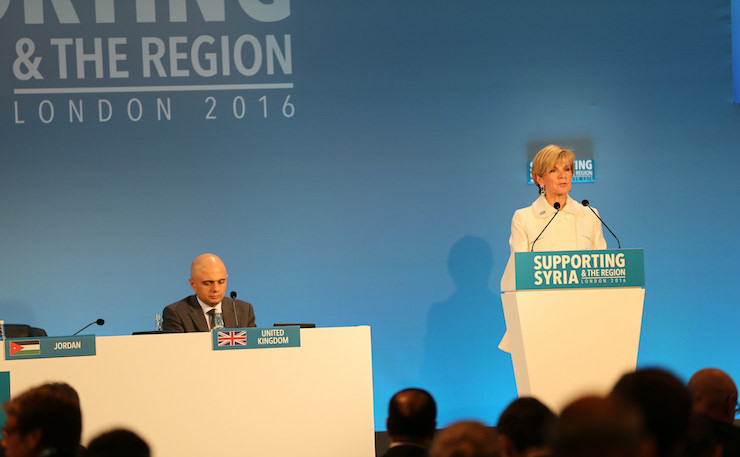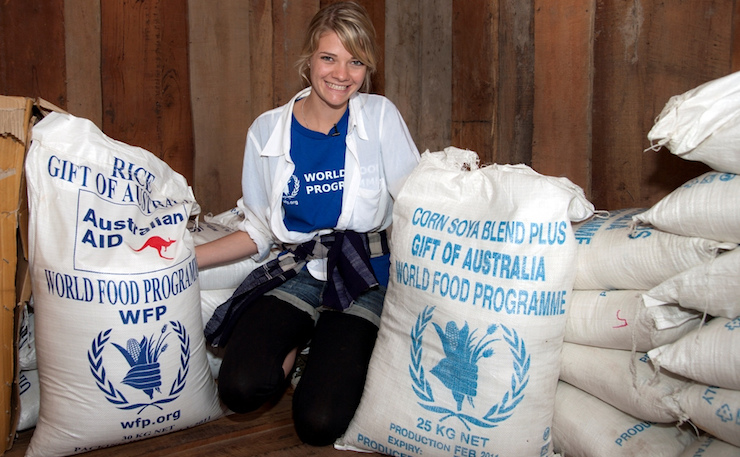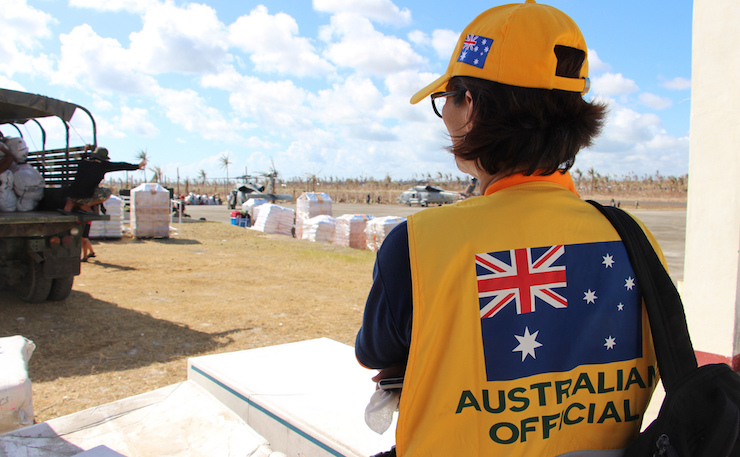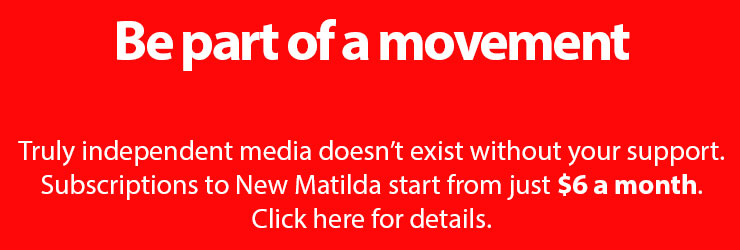The government has savaged Australian overseas aid by reducing its volume and radically altering its purpose, writes James Goodman.
Beyond the debate about how much we give, something significant has changed in the way Australia delivers international aid.
At its lowest level in relation to national income since the early 1970s, here’s how the Coalition has, with virtually zero debate, comprehensively changed the game.
Prioritising National Interest Over Fighting Poverty
The Coalition has reversed the priority of Australian aid. Until 2013 the “fundamental purpose” of aid was “to help people overcome poverty”; aid also served “Australia’s national interests by promoting stability and prosperity”.
Today, the purpose of aid is to “promote Australia’s national interests by contributing to sustainable economic growth and poverty reduction”. The government says explicitly that “economic diplomacy” guides the use of aid. This breaches the OECD’s insistence that aid be “administered with the promotion of the economic development and welfare of developing countries as its main objective”.
Abandoning Our Aid Target
The Coalition has broken the consensus that there be a target for aid spending of 0.5 per cent of national income. At the 2013 election the Coalition announced major aid cuts. Its Commission of Audit abandoned the aid target, arguing aid could only be justified “in terms of the overall fiscal context rather than to a set of funding targets”. Since then, the Coalition has cut aid spending by a quarter, from $5 billion in 2013 to $3.8 billion in 2016.
Defending Fossil Fuels

On a per-person basis Australia is the highest emitter of greenhouse gasses in the industrialised world; exported coal almost triples this figure. Last year Australia signed a UN commitment for a Green Climate Fund with $100 billion a year by 2020 to help developing countries address the devastating impacts of climate change. Australia’s contribution is a derisory and cynical $50m a year, with a few rebadged aid projects that “build on existing investments”. Meanwhile, the government’s emissions reduction commitment is well behind the EU and the US. It instead promotes Australia as a fossil fuel “energy superpower”.
Focusing On Policy Goals, Not Effectiveness
For the last decade aid policy has centred on “aid effectiveness” for developing countries. The Coalition only focuses implementing its own policy targets. The 2016 aid performance review assessed whether policy outcomes were “on track”, not whether the outcomes contribute to development. Three out of four aid experts now think aid is less effective now than in 2013. Why? According to the report that made the finding, those experts believe that, in the current environment, “helping poor people in developing countries has become a less important goal”.
Lauding Private Finance
The Government argues private investment is more important than aid. But aid makes up more than two thirds of external finance for least-developed countries, according to the OECD. In 2014 there was only $35 billion in private “greenfield” investment going to developing countries outside China and Hong Kong; only $1.5 billion went to the Least Developed Countries. In 2014 total global aid was $147 billion, of which $25 billion went to the Least Developed Countries. Clearly, aid is critical for development.
Aid As Investment
The Coalition has renamed Overseas Development Assistance as Aid Investment. But aid is not investment – it is a grant to assist development. The OECD states clearly that aid is not a loan, it is a “concessional” grant. Unlike private finance, aid is not invested for profit. Private investment creates debt; aid is a development grant.

Using Aid To Leverage Access
Australia has signed the OECD’s Accra Agenda for Action on aid effectiveness, which require donors to integrate aid into government spending by developing countries. Australia fails to meet its targets on this. Instead, the aid program downplays the role of the public sector, stating that “all new investments will… promote private sector growth”. One fifth of aid spending is now used for “aid for trade”, that’s $748m to “encourage unilateral reform, promote open and transparent markets and deepen regional economic integration… as part of Australia’s economic diplomacy”.
Soft Cash For Corporates
Aid is a new source of “soft” public funding for private sector projects. The Innovation Xchange distributes $140 million to the private sector and has a reference group of venture capital and corporate conglomerates. The Business Partnerships Platform, with $350m, offers 50 per cent funding for any corporate initiative that can “deliver a combined social and financial return on investment”. Memoranda of Understanding (MOUs) have been signed with large corporations, including Westpac and ANZ, giving them competitive advantage in the Pacific. The Minister states this is “part of the Coalition Government’s economic diplomacy agenda”.
Killing Off AusAID

AusAID was Australia’s development agency, dedicated to effective aid. On the day he was sworn-in as Prime Minister, Tony Abbott announced it would be closed down. No-one voted to close AusAID – it was not mentioned in the Coalition’s 2013 election campaign, nor in its manifesto. Aid now flows through embassies, and is openly part of Australia’s diplomacy. The development mandate for Australian aid administration has disappeared.
Undermining Aid Transparency
There is now almost no comprehensive public information on projects financed by Australian aid. We only get highlights. DFAT states project information is available through the AusTender website, which offers next-to zero information: hundreds of millions of dollars are allocated to individual projects under generic titles. Australia’s aid is off-limits for public scrutiny. Only one in five freedom of information requests to DFAT are ever granted in full – a quarter are outright refused. Leaks become the only source: it was Wikileaks that revealed DFAT was arguing that the Trans-Pacific Partnership Agreement should allow companies to sue developing country governments for lost profits.
The Diplomatic ATM
As predicted by a former AusAid deputy in 2013, aid has become a “diplomatic ATM”. Three-quarters of Australians support aid for humanitarian objectives; but only one out of 10 support the use of aid to promote Australian interests. The Coalition has mobilised populist anti-aid rhetoric, eroding public confidence. Aid is now a soft target, with little political pain in cutting it. In 2015 only a third opposed the 20 per cent cut in the aid budget.
What Can Be Done?
Restoring public confidence in aid, and creating a new public support for real aid, is an urgent priority. This can only happen by transforming what aid is spent on.
The peak aid group, the Australian Council for International Development (ACFID), has campaigned against aid cuts, but broadly accepts the “new paradigm” of national interest and private finance. Australia desperately needs an independent and fearless voice on aid, able to challenge the new orthodoxy. We need a new aid agenda founded on global justice and climate justice to address the pressing problems of growing inequality and climate change. Aid is for partnership, not for market ideology, and for real development, not for narrow Australian interests.
Donate To New Matilda
New Matilda is a small, independent media outlet. We survive through reader contributions, and never losing a lawsuit. If you got something from this article, giving something back helps us to continue speaking truth to power. Every little bit counts.





